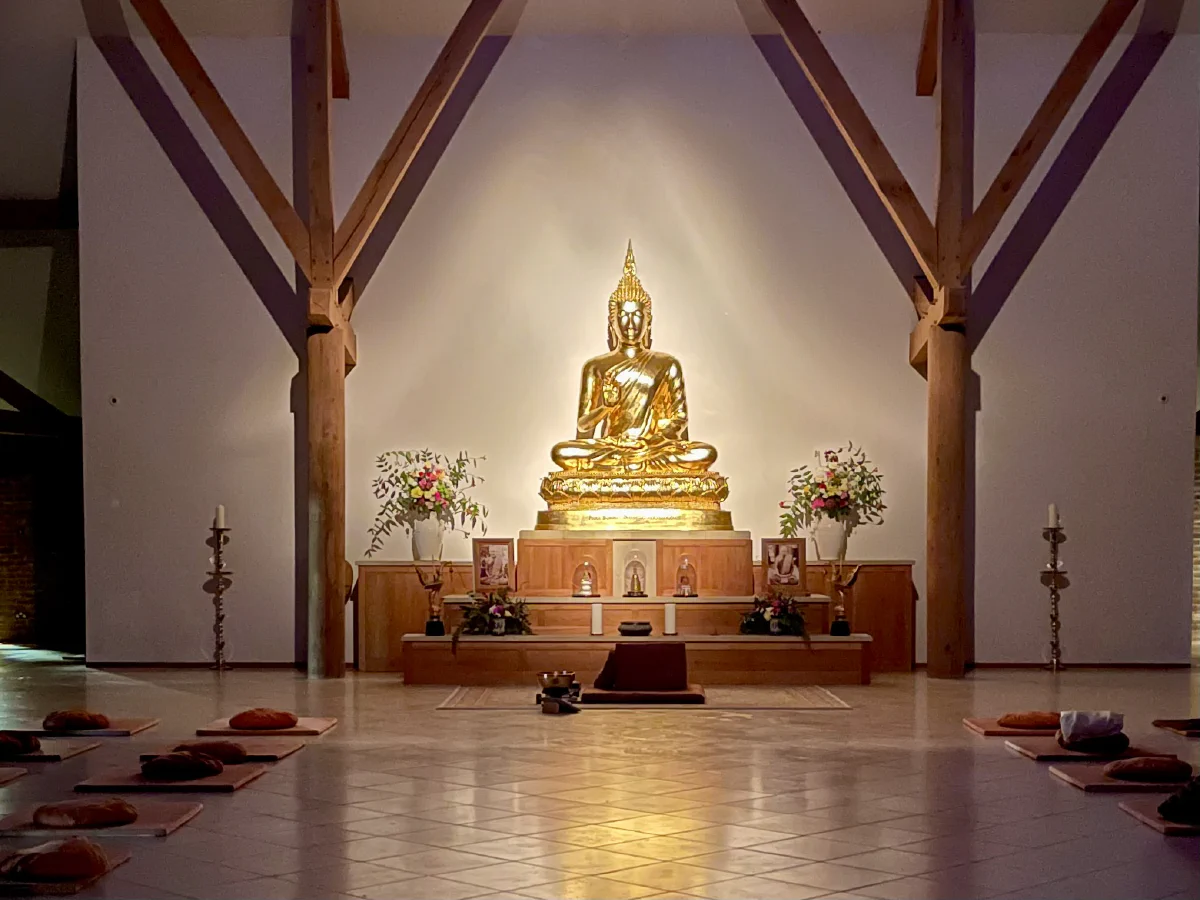Buddhism

DISCLAIMER: I’m truly a novice. This page is not yet organised. I’m just putting things here as I learn them.
Introduction
Here are some miscellaneous notes I’ve gathered to help me in my Buddhist practice. Perhaps they’ll be useful to others. I’m truly a novice but it helps to write things down. Spot something that isn’t quite right? Let me know!
I’ve found so many connections and parallels to my work as an organisational development consultant, agile delivery coach, OKR trainer/coach, and project manager.
FYI, I’ve been practicing in the Theravada tradition so I typically use Pali names for things.
Reminder to self: Don’t just think about this stuff. Practice, practice, practice.
Table of contents
The four noble truths
The backbone of Buddhist teaching and practice.
- There is suffering (dukkha)
- Suffering should be understood
- Suffering has been understood
- There is a beginning (samudaya) to suffering (attachment to desire (tanha))
- Desire should be let go of
- Desire has been let go of
- There is an end (nirodha) to suffering
- Cessation of suffering should be realised
- Creation of suffering has been realised
- There is a path out of suffering (The eight-fold path; magga)
The eightfold path
The path out of suffering. See BBC Bitesize and Wikipedia.
The threefold way: Síla, Samādhi, Paññā
The eightfold path is typically divided into 3 areas known as the threefold way: ethics, concentration, and wisdom.
First you just do the right thing. Then you think and reflect about why it’s the right thing to do. Then you understand why it’s right. See Shu-ha-ri.
- Síla (morality or Ethics) - Do the right thing (speech, action, work)
- Samādhi (concentration) - Think & reflect
- Paññā (wisdom) - Understand & aspire
The eightfold path (within the threefold way)
- Morality (síla)
- Right speech (sammā-vācā)
- Right action (sammā-kammanta)
- Right livelihood (sammā-āvija)
- Concentration (samādhi)
- Right effort (sammā-vāyāma)
- Right mindfulness (sammā-sati)
- Right concentration (sammā-samādhi)
- Wisdom (pañña)
- Right understanding/view (sammā-ditthi)
- Right aspiration (sammā-sankappa)
“Sammā” - usually translated as “right” but better to translate as “attuned” (per Ajahn Amaro)
“Dukkha” - Fun thought: one derivation of the word comes from an off-centre axle hole which makes for a bumpy ride. I like to imagine it’s actually onomatopoeia: If your axle hole is off-centre your cart will go “dukkha dukkha dukkha”! Very annoying. Better to get centered! 😉
The five precepts
Refrain from:
- killing
- stealing (or taking that which is not given)
- sexual misconduct
- Careless speech (including lying)
- Intoxication
The eight precepts
All of the above five precepts plus refraining from:
- Adornment or entertainment
- Eating after noon (1pm in summer time)
- Luxurious furniture
The Triple Gem (The Three Refuges)
- Buddha - Guess what: A human being figured this out and you can too! Take refuge in this.
- Dhamma - Reality is all there is. Take refuge in knowing that.
- Sangha - You have a community centred around every monastery or place of practice. You’re part of it even by knowing about Dhamma. Lay people have an important role supporting the Sangha. Take refuge in the community.
Rest in these things when the going gets tough.
Great talk by Ajahn Candasiri.
Seven factors of awakening
- Mindfulness (sati, Sanskrit smrti). To maintain awareness of reality (dharma).
- Investigation of the nature of reality (dhamma vicaya, Skt. dharmapravicaya).
- Energy (viriya, Skt. vīrya) also determination, effort
- Joy or rapture (pīti, Skt. prīti)
- Relaxation or tranquility (passaddhi, Skt. prashrabdhi) of both body and mind
- Concentration, (samādhi) a calm, one-pointed state of mind, or clear awareness
- Equanimity (upekkha, Skt. upekshā). To accept reality as-it-is (yathā-bhuta) without craving or aversion.
The four messengers (Four kinds of angels)
Seen by the very privileged prince Gautama for the first time when he left the palace:
- an old person
- a sick person
- a corpse
- a monk sitting serenely under a tree
Study & practice = experiential understanding
Here’s a nice dhamma talk. I also wrote about this on my blog.
- Pariyatti - intellectual study
- Patipatti - practice
- Pativedha - penetration, understanding through practice
The 10 perfections (Paramita)
The ten perfections or Paramitas are key character traits to help you out in life on the journey to enlightment.
In the Theravāda tradition they are:
- generosity (dāna)
- morality (sīla)
- renunciation (nekhamma)
- insight (pañña)
- energy (viriya)
- patience (khanti)
- truthfulness (sacca)
- resolution (adhiṭṭhāna)
- loving-kindness (metta)
- equanimity (upekkhā)
Notice we get only two of the four Bramaviharas in the 10 perfections.
Types of meditation
Not an exhaustive list, of course.
- Anapanasati - breath
- Maranasati - death
- Cankama (Pali); Jongrom (Thai) - walking/pacing
- Dhutanga (Pali); Tudong (Thai)- Ascetic practices that include homelessness, alms gathering, never lying down, and more.
The three types of desire (tanha)
- Kama tanha - to get things
- Bhava tanha “bawa-tan-ha” - to become something
- Vibhava tanha “vi’-bawa-tan-ha” - to get rid of or obliterate things
Brahmaviharas
Where do we choose to hang out? “Vihara” literally means “a secluded place in which to walk” (e.g. home or dwelling)
There are many Realms (Viharas)
- Hellish realms
- Animal realms
- Human realms
- Godlike (Devas) realms
- Brahma realms
The Brahmaviharas (aka “sublime states”) are the highest realms.
They are:
- loving-kindness or benevolence (maitrī/metta)
- compassion (karuna)
- sympathetic joy (mudita)
- equanimity (upekṣā/upekkha)
A handy Bramavihara table
I found this handy table on Dhammawiki. I love the idea of a “near enemy” which is deceptively similar to the bramavihara but just different enough to be harmful rather than beneficial.
| Bramavihara | Near enemy | Far enemy |
|---|---|---|
| Metta - Loving kindness | Self affection | Painful Ill-will |
| Karuna - Compassion | Pity | Cruelty |
| Mudita - Joy with others | Exhuberance | Resentment |
| Upekkha - Equaniminty | Indifference | craving, clinging |
Podcasts about Bramaviharas
Preliminary homage/chant
What’s that thing they chant at the start of each Dhamma talk at Amaravati? Dhammacārī
“Namo Tassa Bhagavato Arahato Sammā Sambudhassa” (3x) (Homage to the Blessed, Noble, and Perfectly Enlightened One.)
“Apârutâ tesam amatassa dvârâ Ye sotavanto pamuñcantu saddham.” (The gate to the deathless is open) Source
Useful books
-
The Ajahn Sumedho five-book anthology (link). This is where I started and it’s been a goldmine of practical, energising, inspiring wisdom.
-
Finding the Missing Peace - Ajahn Amaro - Useful, practical introduction to meditation delivered with Aj. Amaro’s characteristic warmth and wit.
-
Simple Kindness - Aj. Candasiri - Nice compact and approachable starting point on the Four Noble Truths, Precepts, Brahma Viharas, etc.
-
Collected Teachingso of Ajahn Chah Vol. 1 - Daily Life Practice - Ajahn Chah - Great starting point to get into his teachings.
There are many many more books from the Forest Sangha, mostly free to download and in many languages. Check ’em out!
Texts (sutta’s) to investigate further
The Anattalakkhaṇa Sutta
Or Anātmalakṣaṇa Sūtra, is traditionally recorded as the second discourse delivered by Gautama Buddha. The title translates to the “Not-Self Characteristic Discourse”, but is also known as the Pañcavaggiya Sutta or Pañcavargīya Sūtra, meaning the “Group of Five” Discourse. Learn more @ (Wikipedia)
The Visuddhimagga
Giant treatise on Buddhism by Sri Lankan Guy 5th century.
(Pali; English: The Path of Purification), is the ‘great treatise’ on Buddhist practice and Theravāda Abhidhamma written by Buddhaghosa approximately in the 5th Century in Sri Lanka. It is a manual condensing and systematizing the 5th century understanding and interpretation of the Buddhist path as maintained by the elders of the Mahavihara Monastery in Anuradhapura, Sri Lanka. More (Wikipedia).
The Anguttara Nikaya
The Aṅguttara Nikāya (aṅguttaranikāya; lit. ‘Increased-by-One Collection’, also translated “Gradual Collection” or “Numerical Discourses”) is a Buddhist scriptures collection, the fourth of the five Nikāyas, or collections, in the Sutta Pitaka, which is one of the “three baskets” that comprise the Pali Tipitaka of Theravada Buddhism. This nikaya consists of several thousand discourses ascribed to The Buddha and his chief disciples arranged in eleven “books”, according to the number of Dhamma items referenced in them. Wikipedia
The three marks of existence
- Aniccā - impermanence. Everything changes.
- Anattā - not self. Don’t take it personally.
- Dukkha - suffering. A universal space for practice.
The five remembrances
The Upajjhatthana Sutta invites us to continuously remember that every one of us is subject to:
- Old age
- Sickness
- Death
- Separation (aniccā)
- Kamma
To make it personal:
- I will age
- I will sicken
- I will die
- I will be separated from all that I love
- I am my actions, they are mine
Or:
- I have not gone beyond ageing
- I have not gone beyond sickness
- I have not gone beyond death
- All that I love will change and become separate from me (I will be separated from all that I love)
- I am the heir to my actions
“All that is mine, beloved and pleasing, will become otherwise, will become separated from me.”
Nikki Mirghafori says:
“These are the Five Daily Reflections that the Buddha suggested people recite every day.
Just like everyone, I am of the nature to age. I have not gone beyond aging.
Just like everyone, I am of the nature to sicken. I have not gone beyond sickness.
Just like everyone, I am subjected to the results of my own actions. I am not free from these karmic effects.
Just like everyone, I am of the nature to die. I have not gone beyond dying.
Just like everyone, all that is mine, beloved and pleasing, will change, will become otherwise, will become separated from me.
Allow whatever arises to come up. It’s okay. These contemplations can bring a lot up. So just be with them as much as possible.”
The five khandhas
- form (or material image, impression) (rupa)
- sensations (or feelings, received from form) (vedana)
- perceptions (samjna)
- mental activity or formations (sankhara)
- consciousness (vijnana)
The four requisites
All you need (according to the Buddhists):
- Clothing
- Food
- Lodging
- Medicine
Dependent origination (12 links)
How do we get from blissful ignorance to suffering? Pratītyasamutpāda. Rolls right off the tongue, doesn’t it?
- Ignorance - Blank slate
- Sankaras (formations) - I have an idea
- Consciousness - I’m aware that I have ideas
- Mentality-Materiality - I’m different from my surroundings
- Senses(6 sense spheres) - I can feel all this stuff!
- Contact - There it is! Something has made contact with my senses
- Feeling - I feel things
- Craving - I want things
- Clinging - I have things and don’t want to let go
- Becoming - I create “self” by having & feeling
- Birth - I’m continuously born into wanting, getting, and hanging on
- Old age, sickness, death - Oh dear. Impermanence bites
Result: Suffering
The Maha Mangala Sutta - On Blessings
Nice story from the Tipiṭaka, one night a Deva asked the Buddha what was the greatest blessing. Read the whole sutta.
According to the Buddha, the greatest belssings are:
“Not to associate with the foolish, but to associate with the wise; and to honor those who are worthy of honor — this is the greatest blessing.
To reside in a suitable locality, to have done meritorious actions in the past and to set oneself in the right course — this is the greatest blessing.
To have much learning, to be skillful in handicraft, well-trained in discipline, and to be of good speech — this is the greatest blessing.
To support mother and father, to cherish wife and children, and to be engaged in peaceful occupation — this is the greatest blessing.
To be generous in giving, to be righteous in conduct, to help one’s relatives, and to be blameless in action — this is the greatest blessing.
To loathe more evil and abstain from it, to refrain from intoxicants, and to be steadfast in virtue — this is the greatest blessing.
To be respectful, humble, contented and grateful; and to listen to the Dhamma on due occasions — this is the greatest blessing.
To be patient and obedient, to associate with monks and to have religious discussions on due occasions — this is the greatest blessing.
Self-restraint, a holy and chaste life, the perception of the Noble Truths and the realisation of Nibbana — this is the greatest blessing.
A mind unruffled by the vagaries of fortune, from sorrow freed, from defilements cleansed, from fear liberated — this is the greatest blessing.
Those who thus abide, ever remain invincible, in happiness established. These are the greatest blessings.”
What holds us back?
The five hindrances
- Sensory desire
- Ill will (rejection, aversion, getting rid of)
- Sloth/torpor/lack of energy
- Restlessness/worry
- Doubt
Doubt as a reason for inaction is unproductive. But as a trigger for active investigation, reflection, and preparation, I think it can be useful.
The ten fetters
Pali: “samyojana”.
- belief in a self (Pali: sakkāya-diṭṭhi)
- doubt or uncertainty, especially about the Buddha’s awakeness (vicikicchā)
- attachment to rites and rituals (sīlabbata-parāmāsa)
- sensual desire (kāmacchando)
- ill will (vyāpādo or byāpādo)
- lust for material existence, lust for material rebirth (rūparāgo)
- lust for immaterial existence, lust for rebirth in a formless realm (arūparāgo)
- conceit (māna)
- restlessness (uddhacca)
- ignorance (avijjā)
On expending effort to be calm and anxiety around imperfection: PDF
Miscellaneous words & terms
- Bhavana - To cultivate, for example:
- Avidyā - Ignorance
- Avīci - One of the lowest hell realms
- Ehipassiko - “Come and see for yourself” - Test the teachings! Use what works.
- Locamani - Conceiver, forming
- Locosani - Perceiver, sensing
- Mahasi_Sayadaw Meditation Method Luang Lor Sumedho learned in Bangkok as a lay person.
- papañca - proliferation of ideas
- Sampajañña - “The mental process by which one continuously monitors one’s own body and mind. In the practice of śamatha, its principal function is to note the occurrence of laxity and excitation.”
- samvega - spiritual urgency. Like a drowning person gasping for air.
- Satipatthana FYI, Luang Por Sumedho says “satisapatanya”
- Sati - Mindfulness - Hello!
- Saṅkhāra - Mental formations
- Vidya - Too see knowingly
Random notes… clean these up!
Katanyu - gratitude “Anyu” knowledge “Kata” to make (kinda like in karate. Or the Toyota Kata (Lean). Make things better.) Acknowledging what has been done for you.
Kataveyde - what you do in response “Vede” feeling Credit Ajahn Suripanio looked at etymology. Via Ajahn Amaro’s dhamma talk. (which one?) What arises in the heart – gratitude.
chagana sati - meditation on goodness. But wait, “chagana” means poop. This can’t be right… More research needed.
Itiwutakaya - don’t belittle puñña: “merit” or “happiness”
Quotes from Luang Por Sumedho:
- “Don’t take your life personally.”
- “Enjoy your life.”



